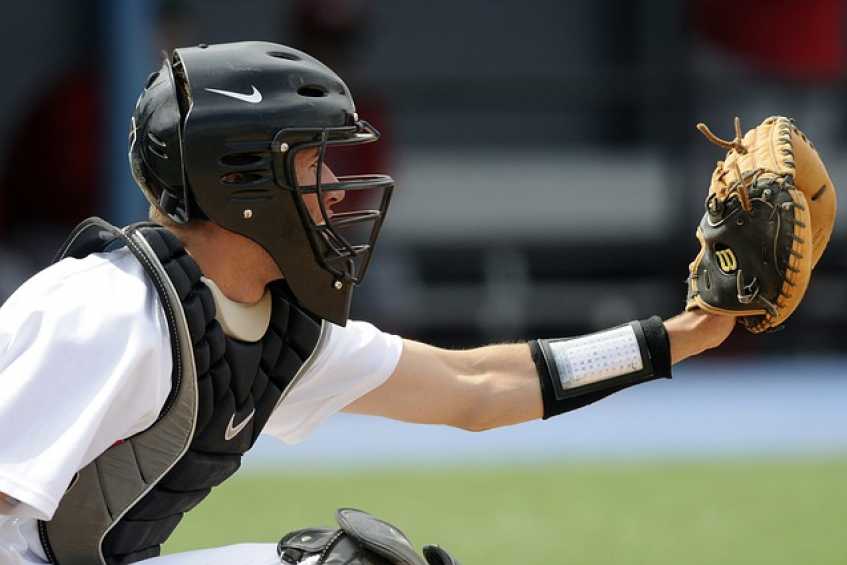


Many people believe that hitting a baseball is the most difficult thing to do in all of sports. Maybe that is so, but the baseball catcher's job is unbelievable, too. Perhaps no position in sports has the amount of decision-making a catcher has. The only other comparison may be the NFL quarterback position.The catching position prepares players to manage as little else does. There is little wonder that catchers make great baseball managers when their careers end. They not only have the whole game in front of them, but they must calculate things faster than other players do. The catching position prepares them to make decisions in an instance, necessary for managing ballgames. The list of great baseball managers that once caught is endless. A few that come to mind in today's game include Mike Scioscia, Joe Maddon, Mike Matheny, Bruce Bochy, Bob Melvin, and Joe Girardi. Obvious to baseball people, that is an impressive list of baseball minds. I have never caught behind the plate a day in my life, but I have great admiration for those that do. Not only do they have to "think the game" before every pitch, but they also have to figure out ways of catching and stopping balls that move in crazy ways. The batter can take pitches that are not striking, but the catcher can't just observe them. They must catch every pitch and make it look like a strike or risk their body to block the ones that bounce in front of them. They take balls traveling at enormous speeds off every body part. No thanks, I am not that tough, no matter how much protective gear one gets to wear. The Mindset of Baseball Catchers. Here are just some of the catcher's thoughts before every pitch:
 Before putting down a sign, the catcher looks to the dugout for any last-second instructions. They check the hitter's set up in the batter's box to see if he changes his normal stance. Hitters will sometimes change their positioning in the batter's box to adjust to a pitch or when trying to entice the pitcher to throw a certain pitch.
Before putting down a sign, the catcher looks to the dugout for any last-second instructions. They check the hitter's set up in the batter's box to see if he changes his normal stance. Hitters will sometimes change their positioning in the batter's box to adjust to a pitch or when trying to entice the pitcher to throw a certain pitch.
The catcher has all that on their mind before every pitch, which means they have about 15 seconds to process everything. They know that calling the wrong pitch at any specific moment can turn the game around. When a called pitch is a mistake, they must forget about it quickly to prepare for the next batter. As if all that is not enough, the catcher must look for flaws or changes in the pitcher's mechanics. They must give signs for specific plays for bunt possibilities, stealing situations, and make calls on bunted balls. They have to shake off the pain of getting hit by fouled-off balls. The toughness to be a catcher is like few other positions in sports. Additionally, baseball catchers have to have flawless mechanics to frame pitches and throw stealing runners out. They have to communicate with umpires in delicate ways to help their pitcher. Not only do they have to react to base runners, but at the same time block dirt balls when thinking of throwing runners out. That mental and physical adjustment takes a quick mind and great mechanics.
I am sure I probably forgot other catcher responsibilities too. It is amazing they hit at all on offense with everything else on their minds. It takes a special player to play the position and the ability to squat a whole game takes a remarkable athlete. For proof of that, try it yourself for just one minute.
#baseballcatching #catchingabaseball Jack Perconte has dedicated his post-major league baseball career to helping youth. He has taught baseball and softball for the past 27 years. His playing, coaching, and parenting stories help create better experiences for athletes and parents. Jack has written over a thousand articles on coaching baseball and youth sports. Jack is the author of "The Making of a Hitter" and "Raising an Athlete." His third book "Creating a Season to Remember" is in the works. Jack is a featured writer for Baseball the Magazine. You can also find Jack Perconte at YouTube with over 80 fun and innovative baseball instructional videos.
After playing major league baseball, Jack Perconte has taught baseball and softball since 1988 and offered valuable coaching training too. He has helped numerous youth players reach their potential, as well as having helped parents and coaches navigate their way through the challenging world of youth sports. Jack is one of the leading authorities in the areas of youth baseball training and coaching training advice.
All Jack Perconte articles are used with copyright permission.There are 0 comments on "Why Baseball Catchers End up Great Managers"
chandler allen says:
"Hi my name is chandler, i’ve enjoyed..."
On Wanting to tryout for summer ball. as an 18 year old
david graham says:
"With no current MLB team in Canada,..."
On With no current MLB team in
Charles Chavez says:
"To All Coaches: Do you have13U or..."
On Looking for Games